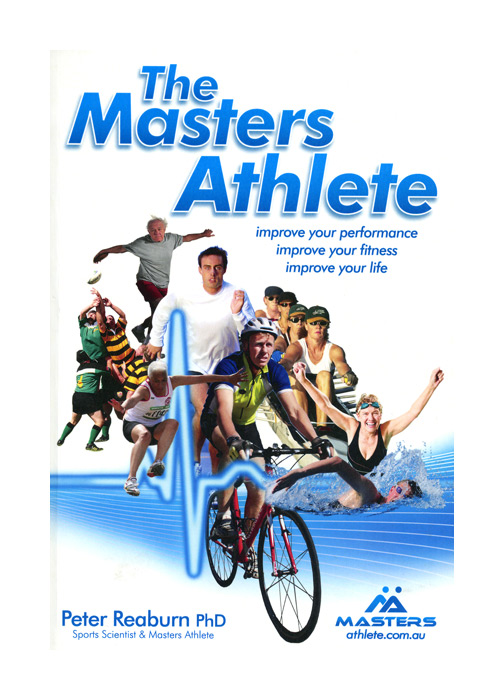Book review: ‘The Masters Athlete’ is Aussie’s magnum opus
Peter has a passion for ‚Äėbridging the gap‚Äô between sport and exercise science and athletes and coaches. He has been an invited contributor to Australia‚Äôs premier coaching magazine Sports Coach for over 10 years, has been invited every year to speak at national and international coaching conferences, and is an invited author of review articles focused on masters athletes for the European Review of Aging and Physical Activity. Through the late 1990‚Äôs Peter and his wife Claire wrote and self-published a hardcopy publication titled The Masters Athlete until a young family came along.‚ÄĚ
The nitty gritty:
‚ÄúThe Masters Athlete: Improve your performances, improve your fitness, improve your life,‚ÄĚ published in 2009 by David Fenech, Info Publishing Pty Ltd of Queensland, Australia; 331 pages, softcover; no cover price listed; 20√ó29.6 cm (almost 8√ó12 inches)
Organization:
19 dense, chart-filled chapters.
Who this book is for:
Masters athletes and their coaches ‚ÄĒ and anyone wanting insight into what makes us tick.
What I liked:
Substantive, concrete information ‚ÄĒ well organized and conveyed. Incredible depth of research and comprehension. Insights galore, such as this in Chapter 13: ‚ÄúOvertraining and the Masters Athlete,‚ÄĚ where Peter writes: ‚ÄúOne of the first signs of overtraining is a consistently poor sleep pattern. Also an elevated heart rate recorded first thing in the morning . . . is an indication that any training undertaken should be minimal if all.‚ÄĚ And he adds his own signs of overtraining, which include, ‚Äúa mildly sore throat, swollen lymph glands in the neck (and) falling asleep in front of the TV watching a favourite program.‚ÄĚ He also lists causes of overtraining and how to treat them. Classic stuff.
What I didn’t like:
The book has no index. And while he occasionally lists ‚Äúrecommended books,‚ÄĚ he skimps on sourcing some of his material. Both would be helpful and bolster the book‚Äôs authority.
Sample: Chapter 16, ‚ÄúNutrition for the Masters Athlete‚ÄĚ
Research suggests that up to 60% of older persons have been reported to use supplements on a daily basis. It also appears that the majority of elderly supplement users are more health conscious and physically active than non-users, and that the more active individuals aged 68-90 years were vitamin supplement users. These findings are similar to those observed in studies examining supplement use in younger athletes. It might be suggested that a daily multivitamin/mineral supplement that provides no more than 100% of the RDA may be recommended for aging exercisers involved in regular physical training. Furthermore, it is suggested that single-nutrient supplements should be limited to calcium, iron and zinc and vitamins B6, B12, D and E depending on an individual’s risk for certain diseases and food consumption patterns.
Bottom line:
This is a state-of-the-art guide to the self-coached masters athlete. The blurbs on the back cover are from bicyclists and swimmers, but they apply to track as well. ‚ÄúSince Peter has come into our world of cycling and triathlon, the word amongst fellow athletes is that of you want to achieve a personal goal you go talk to Peter Reaburn,‚ÄĚ said one. I concur. But don‚Äôt book a flight to Australia. Just send away to Australia for the book.






3 Responses
Where can I get this book in the US. It looks very interesting.
Gary, I know of only one place to order the book:
http://www.mastersathlete.com.au/
Thanks for supporting us guys – even if we are Ozzies!! The book is a lifetime’s work – 45 years as an athlete (25 as a masters) and 25 years as a sports scientist.
Peter Reaburn
Leave a Reply